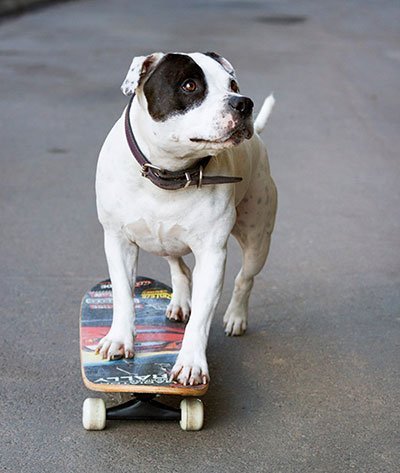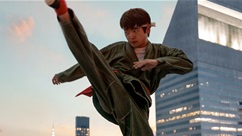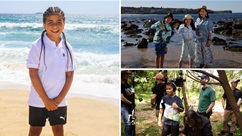Laura V is an animal behaviourist from Melbourne who was inspired by her Staffordshire bull terrier, Chester, to develop a philosophy called Dognitive Therapy! We caught up with Laura to find out how to train a dog to ride a skateboard, just like Chester can!

KZ: K-Zoners will see in our December issue that your Staffordshire bull terrier Chester can ride a skateboard! We’re sure they would love to try to train their dog to do the same thing – can you break down the steps?
Laura: Teaching your dog a new trick requires three things – a reward they LOVE that they don’t usually get, patience and understanding, and fun!
It’s important that your dog loves what they are doing and are choosing to do it with your encouragement. They shouldn’t be forced as that makes them scared, which is not what we want them to feel at all.
Teach your dog to associate a word with their favourite food. For instance, the word ‘yes’ can mean there is food on its way. So practice saying this word ‘yes’ and giving your dog an instant treat for 10 minutes a day over a week.
Once your dog understands what the word ‘yes’ means, you can then start to teach them a trick.
1. Put the skateboard in a place where it can’t move or roll, where there are no distractions and where your dog feels comfortable. The lounge room can be a great start!
2. When your dog looks at the skateboard, say ‘yes’ and give them a yummy treat immediately. Continue this each time your dog looks at the skateboard. If you make it fun and rewarding, your dog will move towards the skateboard. When they do this, say ‘yes’ and reward them immediately.
3. Each day, work towards teaching them to go closer and closer to the board, rewarding them each time. They will soon start to touch the board, then maybe even put a foot on the board! At this time, make sure you say ‘yes’ and quickly give them 5 times as many treats as you usually would. This will really make them want to do it again.
4. If you are patient and make it fun, your dog will be offering to put two, then three feet on the board. At this time, you may be ready to show them that it moves. Take the board to a different place, where it may be able to roll a little bit and give them heaps and heaps of treats when they make it move with their three feet on the board.
5. Voila, your dog can ride a skateboard!
KZ: How did the idea to show Chester to paint start?
Laura: I was trying to think of something to teach Chester that trainers had never taught their dogs to do. Dogs are so smart and eager to work - in fact, encouraging your dog to work for food makes them use their brain, which makes them calm and content. I always want Chester to feel he has purpose and this is such a great task if it is raining outside or too hot to go for a walk.
Often, we see dogs become destructive because they are bored or don’t have a purpose, so it’s so important to give your dog as many jobs as you can. Painting is a great job! We sell his paintings sometimes and raise money for dog rescue organisations.
KZ: Did it take a long time to train Chester to paint?
Laura: The amount of time it takes to teach a dog something new mostly depends on the owner. If your dog isn’t doing what you ask, it is usually because it wasn’t explained to your dog properly. To teach a dog a new trick, you need a plan of what you want to achieve, a step by step guide to achieve the goal and how you're going to teach it. Painting is broken down into very simple steps, which are rewarded along the way and lots of fun. It took me about a week.
KZ: Are there any other activities K-Zoners could train their dogs to do using Dognitive Therapy?
Laura: Dognitive Therapy is a method I use to help people understand that dog training isn’t really about dogs, instead it is about their owners. We control everything in a dog’s life, so if our dog isn’t doing what we want, it is most likely because of us, not the dog. With this in mind, we can teach our dogs just about anything, because Dognitive Therapy looks at training from the dog’s point of view. Remembering those three important steps, some great tricks include: shaking hands, barking, spinning around and playing dead.
KZ: Are there any simple signs K-Zoner’s can look out for to understand what their dog is thinking?
Laura: A great way to understand what your dog is thinking is by looking at their bottom! Well, their tail anyway! Their tail tells us a lot about their thoughts. For instance, if your dog’s tail is in between her legs it means she is very uncomfortable and nervous. If her tail is loose and slowly moving, it means she is relaxed and happy. Her face can tell us a lot too. For example, if she yawns in a new place, or if she shakes her body, it means she is a little stressed. Understanding your dog is an amazing new language to learn. When we understand their language, we get to know their thoughts, which helps us have a great friendship together. Thankfully because of this, I get to call Chester my best friend!










Comment Now!